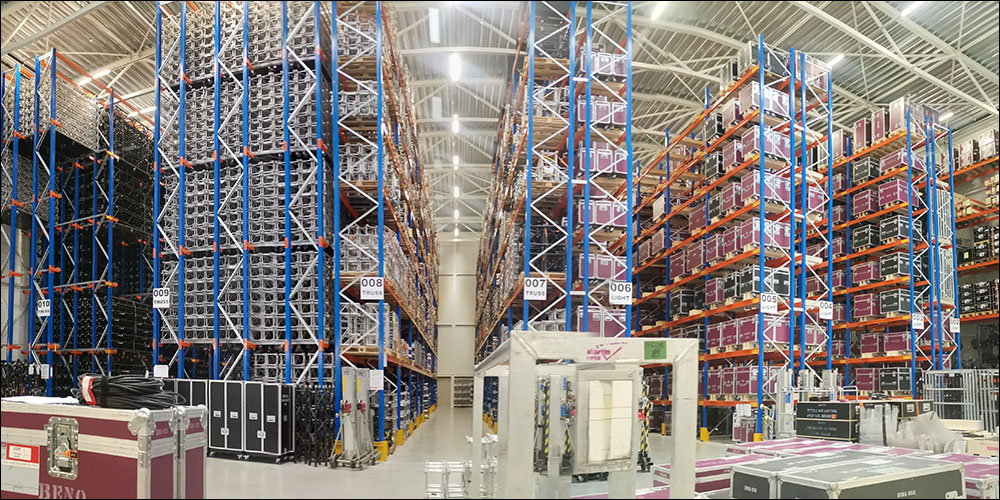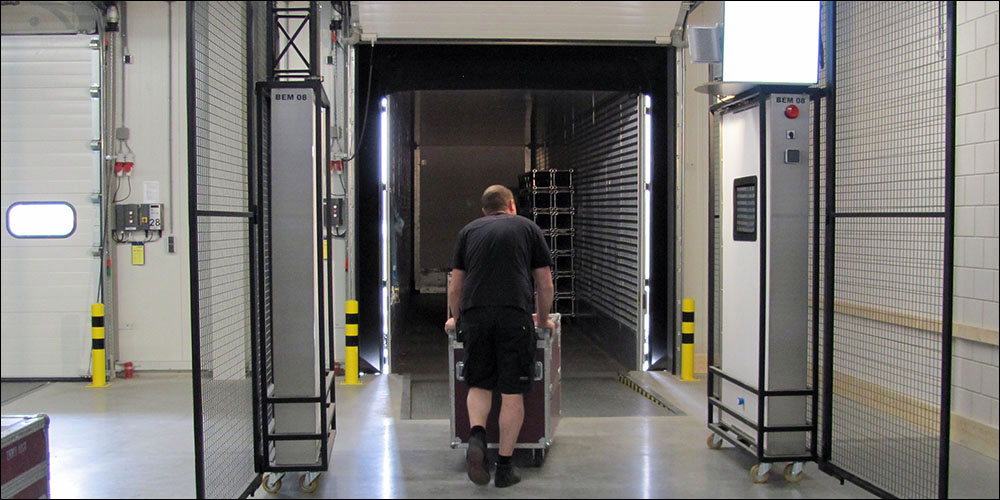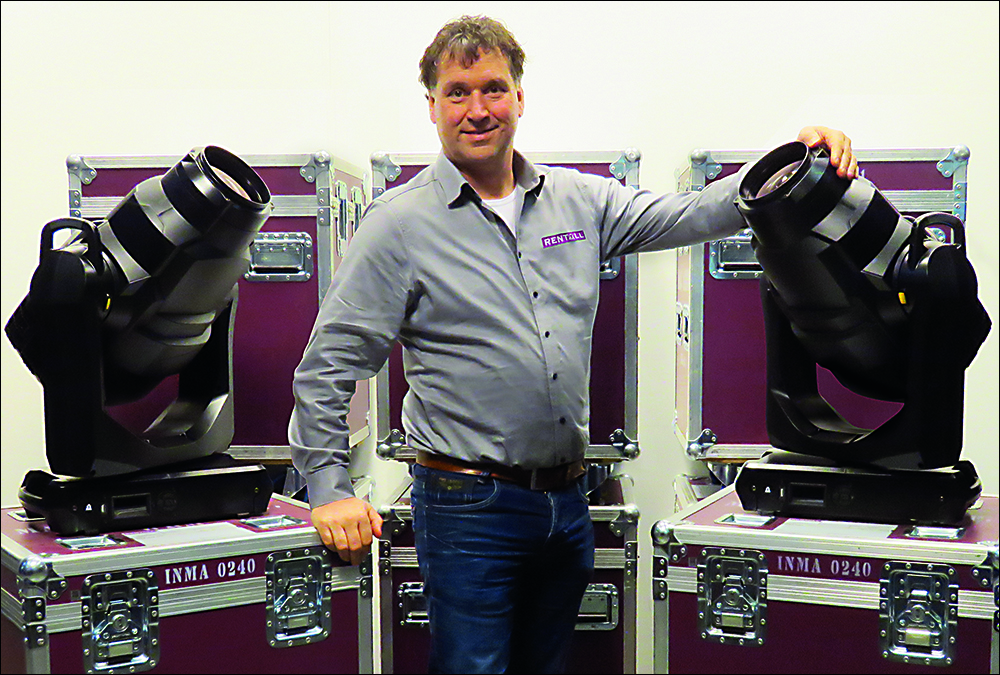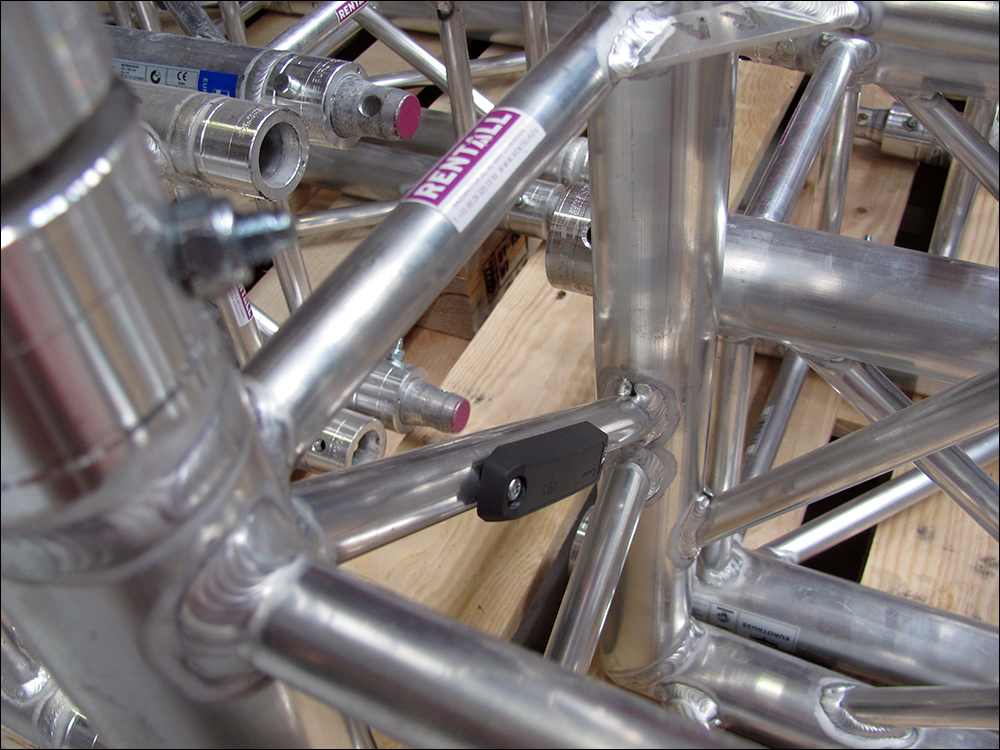Dec 11, 2020Rent-All has deployed an automated system to identify its audiovisual assets as they are transported to and from customer sites. The RFID-based system, the company says, saves time and reduces secondary deliveries due to increased accuracy, while also providing a real-time overview of each piece of quipment's use, turnaround times and maintenance, as well as any failures. The solution, povided by Aucxis, consists of UHF RFID tags and readers to automatically identify each item, while Aucxis middleware and software forward that information to Rent-All's management software.
Since the system was taken live two years ago, it has leveraged 10 mobile reader gates deployed at the company's headquarters in Bemmel, Netherlands, as well as six in Lier, Belgium, four each in Amsterdam and Castrop-Rauxel, Germany, and two in Nurnberg, Germany. The solution includes Aucxis's HERTZ middleware and software, which interpret data and forward it to Rent-All's enterprise resource planning (ERP) software, hosted on a local server. Rent-All provides rigging, lighting and audiovisual equipment out of the five sites in the Netherlands, Belgium and Germany.

Tags are read at Rent-All's warehouse and maintenance areas to capture data regarding the status of each item.
"We deliver equipment to the entertainment industry," says Theo van Workum, Rent-All's CEO, including theater and television studios, fairs and festivals across Europe. The company rents out its fleet of approximately 260,000 rental items and employs around 350 people. Traditionally, the incoming and outgoing flow of rental materials, as well as the boxes in which they are transported, were manually registered at the time of each shipping and receiving event. This, he says, was a time-consuming and error-prone process.
"As we offer a wide range of products and we have products in very large quantities in various warehouses," van Workum says, "we felt this is no longer manageable for our warehouse staff." The company wanted to have full control of each asset's location, whether an item was shipped to a customer or was onsite in storage or maintenance, 100 percent of the time. To automate the process, the firm opted to deploy a passive UHF RFID system. "This was the reason for us to equip our complete inventory with RFID tags.," he states.

Mobile reader gates installed at the dock doors capture flight case and asset tag IDs as orders are loaded onto a vehicle.
In addition, Rent-All needed to help prevent second deliveries to customers for scenarios in which not all rental items (or the wrong items) were transported. This process of correcting errors was very expensive and time-consuming for Rent-All, van Workum explains, and was frustrating for customers. The company had no real-time overview of each article's lifespan, nor of rental items reaching the end of that lifespan, which could be sold.
Aucxis provided a proof of concept in 2015, then a pilot the following year, according to Rik Heirman, the company's account manager and business consultant, after which Rent-All began working with the system in 2018. During the past two years, the firm has expanded its use with additional gates, modifications and tags for new rental products. The application presented several challenges for the RFID deployment, Heirman recalls. For one thing, there is a wide range of item types, and in many cases that meant various kinds of tags would need to be deployed, and that tag reads needed to be fast and accurate.

Theo van Workum
The loading process at the docks moves rapidly, limiting the amount of time for tags on the rental items to be read. Aucxis provided Impinj RFID reader gates, then applied durable on-metal Omni-ID or Confidex UHF RFID tags to each individual asset and pallet, as well as all flight cases in which equipment is stored. Each tag has a unique ID number encoded on it that is linked in the software to the asset's description. The only items not tagged are the cables.
Workers bring the packed order to the loading docks in flight cases. The mobile RFID reader gates installed at the dock doors capture each flight case's tag ID and asset tag IDs as the order is loaded onto a vehicle. The software is then updated with the status of the order linked to the flight case's RFID number. Rent-All thus has an automatic record of what was shipped to each specific customer, as well as when this occurred. If an error is made, such as an item being left out of a shipment, an alert is displayed on the reader gate as a red light, while a buzzer sounds for warehouse workers, thereby reducing the need for secondary follow-up shipments.
Once a customer returns equipment, it comes back through the dock doors and the tags are read again. The tags are also read at Rent-All's warehouse and maintenance areas to capture data regarding the status of each item. Projectors and TVs, for example, are checked and cleaned when a customer returns them before they are moved into available stock. With the RFID system, Rent-All's management knows each returned item's status. The system helps to reduce confusion, Heirman says, by automating the identification of items that might look similar. For example, trusses that measure either 25 or 27 centimeters (9.8 or 10.6 inches), as well as various types of engine hoists, can be difficult to visually identify.

Trusses and engine hoists can be difficult to visually identify, but tagging them makes them easier to locate.
The deployment posed a few challenges for the technology, Heirman says, including the need to determine the best tag configuration for the wide variety of equipment shapes and materials available. Rent-All and Aucxis chose to deploy a test gate reader at the Bemmel headquarters so that tags could be applied to new equipment and be tested before being widely deployed. This enables Rent-All to determine configurations in-house without requiring assistance from Auxcis.

Rik Heirman
"Material in the audiovisual world evolves very fast," Heirman says. By using the test gate, he explains, Rent-All can autonomously test which tag is suitable for a new product—for example, applying a tag to a spot which is similar to one on another piece of equipment. In the event that Rent-All cannot determine the best configuration, Aucxis helps it do so. "But by using the test gate," he states, "they are more independent and save a lot of time."
All of the rental company's assets are now tagged. Meanwhile, Rent-All continues to acquire new material so that it can keep up with the latest audiovisual technology and replace any items that are broken. Each new product receives a tag when it is received. As each tag is commissioned and linked to a particular piece of equipment, the HERTZ middleware captures that data and links it to the Aucxis RFID software, which includes dashboards and other visualization screens. The data is then integrated with Rent-All's on-premise warehouse-management system. In the long term, the company plans to continue leveraging the technology with more reader gates and tags applied to all new assets.

